SEE MORE >>
MEET MARISSA
As an inclusive wedding photographer I’m here to help you craft an intimate, meaningful celebration that feels 100% true to you and your love. Together with my camera, I’ll be a supportive advocate of your unique love story every step of the way.
GET TO KNOW ME
I CHOOSE TO GIVE BACK
READ WHY
<< BACK TO WEBSITE
<< BACK TO WEBSITE
INTERESTED IN SEEING MORE?
PORTFOLIO
PRICING
Stunning Oregon Elopement Locations That Are Accessible to Everybody
December 10, 2020
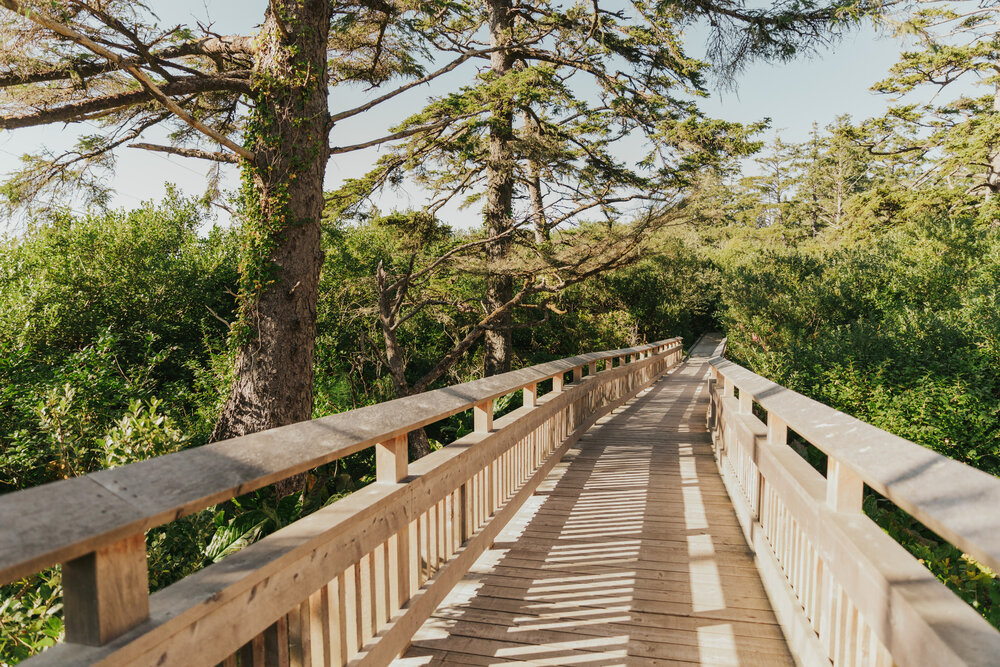
ADA-Accessible Wedding & Elopement Locations in Oregon
Created with consideration & consultation by Syren of Disabled Hikers who provided insight & sensitivity readings prior to publication for this resource about ADA-accessible elopements. Thank you to Jenn Maurer for copywriting excellence & compassion in helping to create this resource.
Table of Contents
- First, let’s talk about language
- Also, I need to talk about equality
- Your Guide to ADA-Accessible Elopement Locations
- Tips for Planning an ADA-Accessible Elopement in Oregon
- How to Ask Someone What Their Accessibility Needs Are
- Language & Definitions Regarding Accessibility
- ADA-Accessible Oregon Elopement Locations
- Additional Resources & Links
You want to celebrate your relationship in a beautiful place by having a small, intimate ceremony – but you, your partner, or a desired guest has specific accessibility requirements. How can you sift through all the trails out there, verify the accessibility of locations using real-time data, and know whether labels are really accurate? It’s tough! Physical disabilities require a thoughtful approach to location scouting, but there are still many places to choose from that are beautiful, and more easily accessed. Your love of the outdoors shouldn’t be limited by accessibility requirements – this guide can be the first step toward choosing an ADA-accessible elopement location in Oregon.
You don’t need to hike (or hike very far) to access stunning elopement locations in Oregon – in fact, there are many GORGEOUS places that are wheelchair accessible, have ADA-compliant facilities, and don’t require much travel to get to. Below, I’ll help offer tips for planning ADA-accessible elopements, list locations throughout Oregon that are rated as wheelchair accessible, and give trail details on each of those locations so you can better determine if they will suit your needs. I’ve also included an extensive (though not exhaustive) list of links to resources that can help you find even MORE locations for your ADA-accessible elopement in Oregon.
First, let’s talk about language –
After consulting with Syren, I learned more about how language in the disabled community is extremely important. I also learned there is no perfect solution that communicates the preferences of all individuals with accessibility requirements. Members of the disabled community are as uniquely individual as anyone else, yet in this guide I’ll be using language to speak about topics that affect more than one person. In an attempt to respectfully discuss the needs of individual folks as a collective, I’ve chosen to use identity-first language, which is like saying, “disabled person.” The other common language choice is called person-first, which is like saying “person with a disability.” Neither is right, or wrong. I’ve chosen to use identity-first language because I want to acknowledge through my word choices that an individual’s human experience occurs through their identity and interaction with the world through their abilities. . Person-first language has at times been used to erase someone’s disability, or minimize it, when there is zero shame in being disabled. In the same vein, I’d like to acknowledge my privilege as a non-disabled person. I don’t want to use the term able-bodied because that implies ability is the standard and disability is abnormal, which is deeply harmful rhetoric. I’m making these language choices based on Syren’s recommendations, and I am always open to learning more!
Also, I need to talk about equality –
Disabled individuals do not have marriage equality. If this is a shock to you, you’re not alone! I’ve recently learned that the benefits many disabled folx are dependent upon require they don’t marry. Or rather, marriage almost guarantees that a disabled person will lose their benefits. To keep their benefits, the threshold for a disabled person’s assets and income is actually below the poverty level. So, if they were to become legally married, their combined income has the potential to make them ineligible. In fact, even having a long-term partner publicly can reduce a disabled person’s access to free or subsidized assistance, because a partner is often viewed as a caretaker – this caretaker consideration almost never comes with the nuances that a disabled person’s partner might work full time, have other responsibilities, or for any reason be unavailable for long-term assistance. Considering this inequality, if you’re looking for a photo session to celebrate your relationship in any form, I will do my utmost to work with you and honor any privacy requests. Yes, I use Instagram as a major marketing tool. No, your names and faces don’t need to be published on any platform. I’m here to document your relationship first and foremost for you – your needs will always come first.

Your Guide to ADA-Accessible Elopement Locations
I crafted this guide with care and consideration that many accessibility concerns are things I’ve not personally experienced as a non-disabled person. As an intentionally inclusive Oregon Elopement Photographer, accessibility is something I’ve thought about a lot, and what I’ve learned through listening to those who do have accessibility requirements informs how I help couples plan, navigate, and photograph their elopements. No matter what you read here, your needs and the accessibility needs of your partner, friends, and family are 100% up to you – there is no one-size-fits-all guide that will answer every question or address every preference, so I hope you’ll be willing to share with me your needs, and use this guide as a starting point for finding ADA-accessible elopement locations in Oregon.
It is my goal that this guide gives you a clear understanding of the facilities, accessibility, and physical requirements of each specific elopement location listed below. I’ve already done the work to determine each trail listed is accessible to most folks, but recognize everyone has unique requirements for distance, time, etc. My hope is that disabled people, and those who have a partner or guest with accessibility requirements, will find this guide informative. For every elopement location featured, I have included the following information:
- Location of the trail (or closest city)
- Trail Surface
- Distance to closest airport
- Length of trail
- ADA-Accessible Parking Spots (number of spaces & whether paved if known)
- Whether there are benches along the trail
- Incline over length of trail (max % grade if available)
- ADA-Accessible Bathroom Facilities
- Whether I’m aware of picnic tables or a seating area
- The contact information for the land manager (call ahead to confirm accessibility), or other resources to learn more about the trail conditions
Much like the beauty of Oregon’s nature – this will be a living document about ADA-Accessible Elopements that I’d love to see grow over time.
Periodically I plan to update any trail conditions or notices, include more resources, and incorporate additional ADA-accessible elopement locations to the list. If you have any recommendations for additional resources or Oregon locations to include, (or any errors) please feel free to contact me (or email me at marissasolini@gmail.com) with any comments or suggestions.
August 2023 Addendum: Removed Little ZigZag Falls from this list. Despite numerous online sources stating the trail as “wheelchair-friendly”, my own gut feelings after visiting the trail were confirmed by Syren Nagakyrie’s assessment of this trail being inaccessible to wheelchair users beyond the first few feet to a creekside picnic table.
September 2021 Addendum: I have made the following updates to this resource. Updated information about the Rim Rock Trail at Smith Rock State Park. Added more info to Watchman Peak trail. Removed the Spoon Rating system from the trail assessments (per Syren Nagakyrie’s request, they created the system but believe there may be a little more in-person training needed to properly assess the difficulty levels of trails).
Tips for Planning an ADA-Accessible Elopement in Oregon
- Get a Pass – Interagency Access Pass, Northwest Forest Pass, or any other applicable pass to your situation & chosen location for your ADA-Accessible elopement activities.
- Off-Season or Weekdays – These are the least busy times on the trails in easily-accessible locations. If you want some privacy in a place that is easily accessed, you’re going to want to avoid weekends in the summer.
- Mind the Weather – The time of year you get married can greatly affect the weather you encounter, as well as the accessibility of many National Parks and trails. Whether the season you get married is more important, or the location is – putting in the research ahead of time on the history of that location’s weather patterns can ensure you and your guests are better prepared for weather conditions and safe travel, both on & off the trails.
- Check With Your Host – Use AirBnb’s “needs” search while looking for lodging, but also check with your host that the place is truly going to fit your needs.
- Rent a Wheelchair-Accessible Car – If you’re traveling via plane to your destination, a wheelchair-accessible car can make you & your loved ones much more comfortable traveling & getting in or out of the vehicle at a trailhead.
- Get A Permit – Not every place requires one, but a special event permit on public lands gives you the freedom to celebrate out in nature without worrying about whether or not it’s okay. Also, some places (like national parks) offer event monitoring or help, which might make it easier for you to access a spot.
- Call Ahead – Speaking to a ranger or land manager is your best chance to get up-to-date information on an area, whether the bathrooms are open, the parking lot is accessible, & no fallen trees, wildfires, or maintenance affect the trail.
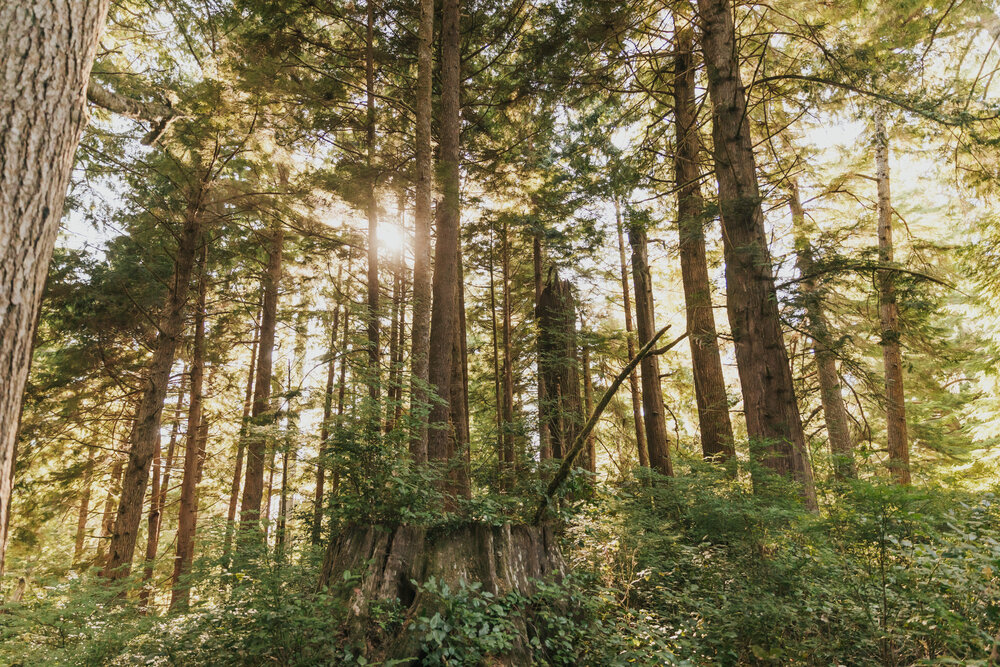
How to Ask Someone What Their Accessibility Needs Are
If you or a loved one has accessibility requirements that will affect the location you choose to get married, beginning the conversation about those needs can be tough. We all respond differently when it comes to asking for help, but an empathy-driven approach can save a lot of heartache and miscommunication in the future.
If you need to inform someone of your needs –
- Open the door for communication. Feel free to send over this guide as an icebreaker to begin the conversation about your needs
- Don’t assume folx understand, but expect them to care
- Be honest & specific
- Communicate what you want
If you want to ask someone how you can support their needs –
- Begin the conversation, don’t wait for them to come to you. If you send over this guide, you can ask what they feel applies to them, and what you’d need to do differently in support of their individual requirements
- Ask them to be specific about their needs & wants
- Don’t assume their outdoor requirements look like their indoor experience
- Communicate accessibility as an option. If this kind of experience is totally new for them, explain you’ll support their efforts to make it possible
Language & Definitions Regarding Accessibility
ADA – Americans with Disabilities Act of 1990. This is used as the standard to prevent discrimination of disabled folx in public spaces and applies to state facilities like some parks and recreation areas. If a space is ADA-accessible, that means it can be accessed by a person “self-propelling in a standard wheelchair.” This is the most widely-understood standard for accessible public spaces, though technically federal lands, and lands maintained by federal funds, are actually built by the standards of the ABA. The ADA was amended in 2008 to expand the definition of “disability.”
ABA – Architectural Barriers Act of 1968. This is the standard on a lot of federal lands and buildings to make the physical spaces accessible to disabled people. Realistically, the ADA & ABA are used interchangeably in public spaces to reference “accessible spaces,” though there are technically differences between them. The ABA is the standard in many national parks and forests and is generally more specific, for example it requires a paved or boardwalk trail to have obstacles no higher than ½ inch, and compact gravel or dirt trails no higher than 2 inches to be considered accessible (rocks, roots, joints, etc.). This distinction of a couple inches of rise can impact someone’s ability to self-propel.
Example of why clear accessibility labels matter: We’ve seen some national parks and public lands use the label “accessible with assistance.” However, by most legal understandings, requiring assistance *at all* makes a space inherently inaccessible. These inconsistencies can make it confusing and difficult to determine for oneself if a space is truly welcoming. In this resource I strive to include essential information about each trail and the terrain so folx can make the most informed decisions based on personal accessibility needs.
Spoon Rating – This is a rating system created by Syren Nagakyrie at Disabled Hikers used to identify the accessibility of a hike, trail, or outdoor space for someone with physical, sensory, or mental disabilities. It uses a measure of trail attributes (length, % grade, surface, & obstacles) to help a prospective adventurer determine their required effort as a disabled person to complete the experience. 1 is easiest. For a non-disabled individual, many hike ratings are left to easy, moderate, or hard, without specific accessibility considerations.
September 2021 Addendum– I have removed the Spoon Rating system from the trail assessments (per Syren Nagakyrie’s request, they created the system but believe there may be a little more in-person training needed to properly assess the difficulty levels of trails).
ADA-Accessible Elopement Locations in Oregon
1. Smith Rock State Park – Rim Rock Trail – This trail features views of the steep rock formations in the park, as well as the winding river that flows in the valley between them. This park is located in what’s called the “High Desert”, named for both its dry climate and high elevation. Extra hydration recommended, as well as extra sunscreen since a lot of this park is exposed to direct sun.

September 2021 Addendum: After discussion with Syren Nagakyrie of their experience at Smith Rock State Park earlier Summer 2021 I have made some edits to this listing to include accurate up-to-date information. Though the Smith Rock State Park was slated to have fully ADA-Accessible trails by 2020/2021, the Rim Rock Trail is not 100% wheelchair accessible just yet. I will still keep it on this list currently in hopes this information can still be of use to others.
From Syren’s review of Rim Rock trail – “…there are a couple of steeper grades on loose pea gravel – I wasn’t able to measure, but I estimate they are around 10%, up to 20 feet long. You then cross a bridge with a step down on the opposite side, take a switchback with another steep grade, and cross a boardwalk with a two inch rise. The trail is generally three feet wide with loose pea gravel surface.”
- Location of the trail (or closest city) – Terrebonne
- Trail Surface – Loose pea gravel and boardwalk
- Distance to closest airport – 11 miles (RDM)
- Length of trail – 1 mile
- ADA-Accessible Parking Spots – Yes
- Benches along the trail – Yes
- Incline over length of trail (% grade if available) – 22 feet
- ADA-Accessible Bathroom Facilities – Yes
- Picnic tables – Yes
RESOURCES
- Disabled Hikers – Smith Rock State Park
- Smith Rock
- All Trails – Rim Rock Trail
- What’s Next for Universal Access at Smith Rock? (July 2019 article with insight into past improvements and planned improvements for 2020-21)
2. Rockaway Big Tree Trailhead – This trail wraps around an appropriately named big tree, the wooden walkway built right around the trunk so you can get a very close-up view.
Including a helpful description from Hiking Project here: “The Old Growth Cedar Wetland Preserve, originally donated to the town of Rockaway Beach by the Nature Conservancy, showcases a beautiful wetland full of native plants and huge sitka spruce.
The boardwalk lets you stay above the mud and cross the creeks without getting wet while being surrounded by salal, skunk cabbage, salmonberry, and sedges. The boardwalk has curbs for safety and railing when crossing creeks or in places where it is higher off the ground. The boardwalk splits after a short distance. The left-hand path leads to a wetland observation deck with benches and picnic tables, perfect for a snack or lunch. School groups use this area to teach the students about the wetland habitat.
The right-hand path, newly built in Spring of 2020, leads on to the Big Cedar, heading slightly uphill (still ADA accessible) into drier old-growth forest. The path crosses a long bridge over the creek before reaching the Big Cedar. The boardwalk circles the huge old tree, with a wider viewing platform on one end.”
- Location of the trail (or closest city) – Rockaway Beach
- Trail Surface – Boardwalk
- Distance to closest airport – 98 miles (PDX)
- Length of trail – 1 mile
- ADA-Accessible Parking Spots – Yes
- Benches along the trail – Yes
- Incline over length of trail (% grade if available) – 36 feet
- ADA-Accessible Bathroom Facilities – Yes
- Picnic tables – Yes
RESOURCES
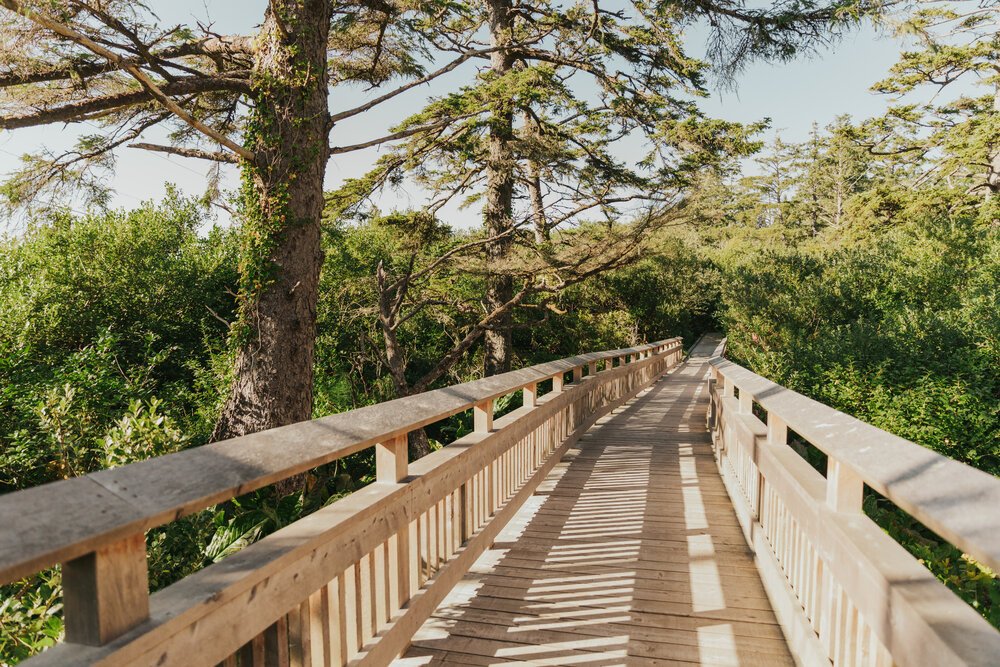
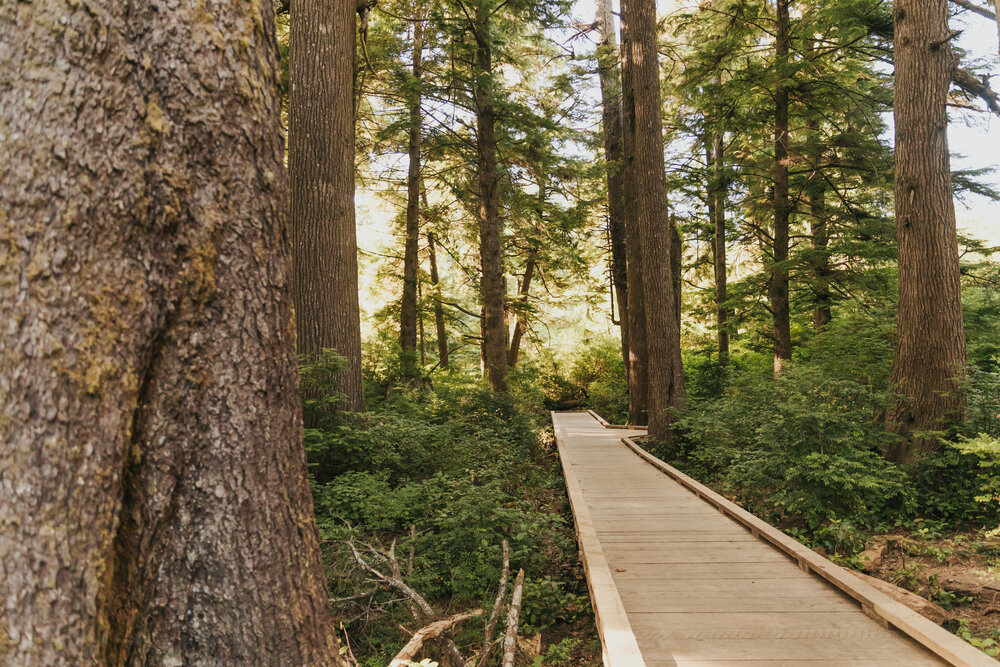
3. Ray Atkeson Trail – Sparks Lake – This trail winds through lodgepole pines, amongst lava rock formations. The trail is open to the sky with little to no tree coverage, and a vast view of snow-capped distant mountains. The lake is a popular destination for kayaking during the Summer. A Northwest Forest Pass (or America the Beautiful Pass) is required
- Location of the trail (or closest city) – Bend
- Trail Surface – Paved
- Distance to closest airport – 35 miles (RDM)
- Length of trail – 1 mile
- ADA-Accessible Parking Spots – Yes
- Benches along the trail – Yes
- Incline over length of trail (% grade if available) – 60 feet
- ADA-Accessible Bathroom Facilities – Yes
- Picnic tables – No
- NOTE: This is a 2.3 mile loop trail, but the first .5 miles are paved and ADA-accessible. Only accessible by passenger car June-November.
RESOURCES
- Hike Central Oregon – Ray Atkeson Trail
- Ray Atkeson Loop Hike – Oregon Hiker’s Guide
- Deschutes National Forest -Ray Atkeson Trail
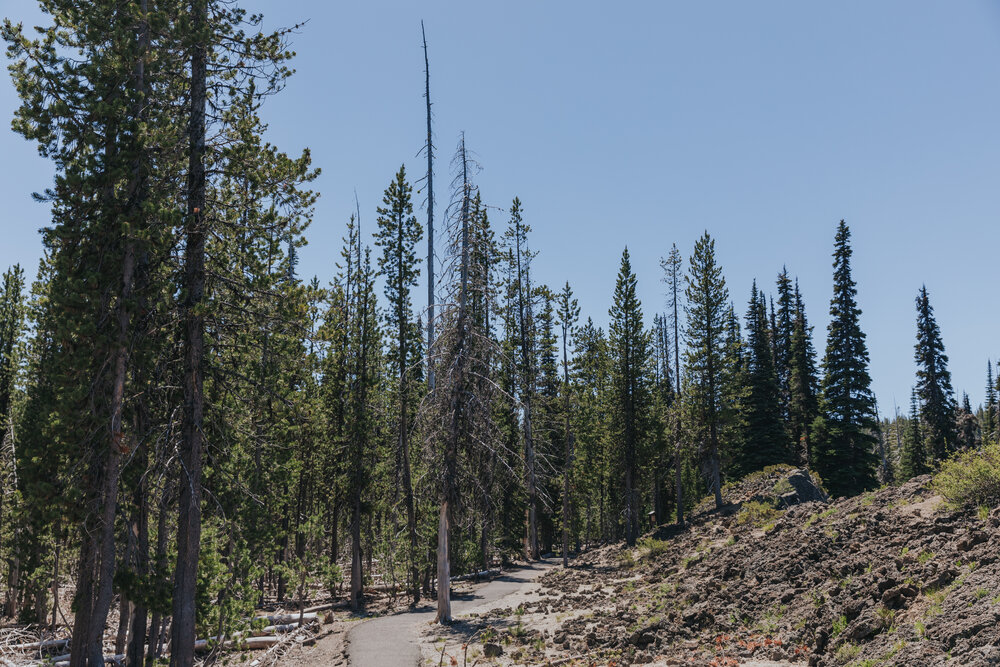
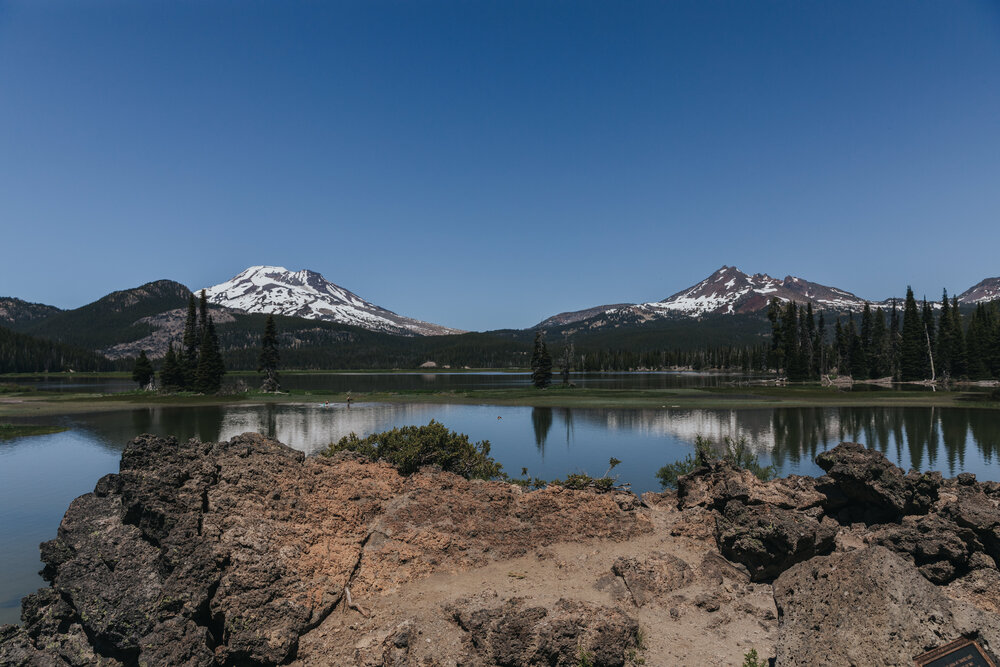
4. Painted Cove Trail – Painted Hills – The boardwalk winding through this colorful desert setting is mostly flat, and the hills themselves are a deep red/orange. There is interpretive signage along the way. The boardwalk serves an added benefit of protecting the fragile soil below. Something to note is that this location is pretty far away from any big cities or facilities. There is also little to no tree coverage, so extra hydration and sunscreen recommended if you choose this as a location for your photo session or ADA-accessible elopement.
- Location of the trail (or closest city) – Mitchell
- Trail Surface – Boardwalk
- Distance to closest airport – 196 miles (PDX)
- Length of trail – .3 Miles
- ADA-Accessible Parking Spots – Yes
- Benches along the trail – No
- Incline over length of trail (% grade if available) – 78 Feet
- ADA-Accessible Bathroom Facilities – Yes
- Picnic tables – Yes, there is a picnic area with picnic tables nearby
RESOURCES
- All Trails – Painted Cove Trail
- NW Travel – Painted Cove Trail
- Travel Oregon Article – “The Painted Hills, A Gift For All”
5. Watchman’s Peak – Crater Lake – This viewpoint above the lake features a lookout (not wheelchair-accessible) and a walled overlook (wheelchair-accessible) where you can see the entirety of the lake and island in the middle. There are a few spots that might not leave the view visible from a seated height because of the safety wall.
Including a helpful description from Candy B. Harrington here – “For a good view of Wizard island, be sure and stop at Watchman Overlook. There’s accessible parking, curb-cut access up to the sidewalk, and accessible vault toilets at this stop. There are steps up to the upper overlook, but there’s also a ramp at the far end of the parking lot. Even though the ramp is steep — with a grade of 1:8 — some power wheelchair-users may be able to manage the climb. Don’t fret if you can’t make it to the top though, as you’ll catch some of the best views of the island from the road.”
- Location of the trail (or closest city) – Union Creek
- Trail Surface – Hard-packed gravel
- Distance to closest airport – 62 miles (MFR)
- Length of trail – 1.6 miles for the hike to the lookout, less than 0.1 miles from parking lot for walled overlook.
- ADA-Accessible Parking Spots – Yes
- Benches along the trail – Unknown
- Incline over length of trail (% grade if available) – 387 feet
- ADA-Accessible Bathroom Facilities – Yes
- Picnic tables – Yes
Note from oregonhikers.org – “This trailhead is only open about four months of the year. The North Entrance to the park may close by mid-October; it reopens anytime between Memorial Day weekend and mid-June, depending on snow conditions. To reach this point during the road closure, enter the park via the South entrance and park at the Rim Village Trailhead.”
RESOURCES

6. Smith Homestead Forest Learning Shelter – The wooden and stone building here is a rentable event space beside grass-covered grounds, that are surrounded by trees that turn beautiful colors in the fall. Bordering the grassy area is a wooden fence that overlooks a rushing river below. Inside the shelter is a stone fireplace which can be used during your rental for warmth, ambiance, and even marshmallow roasting. Additionally several “walls” of the shelter run on tracks that can be kept closed or pulled open to the outside.
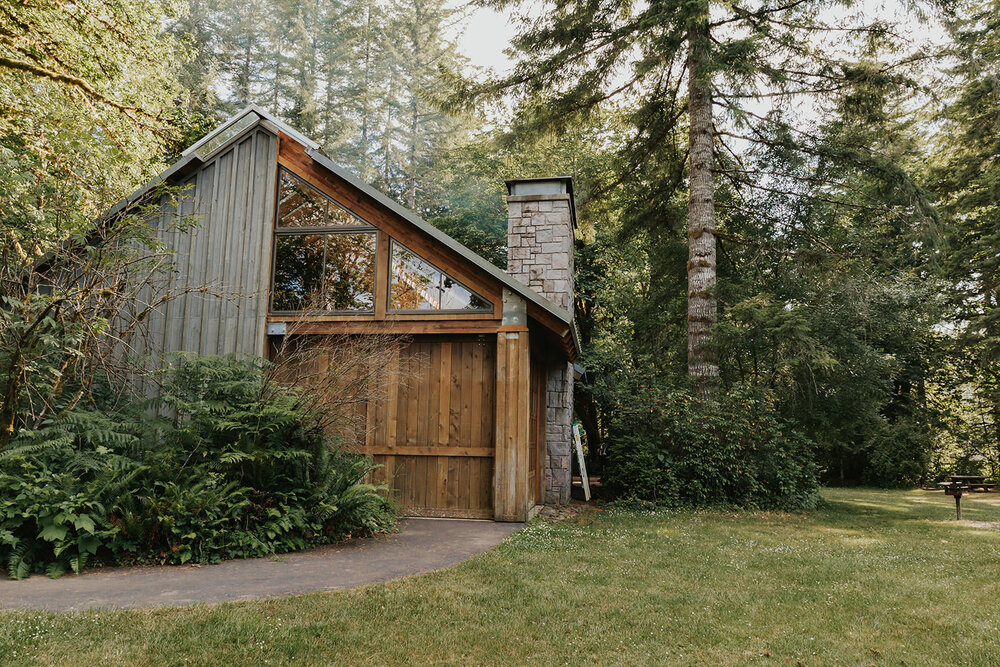
- Location of the trail (or closest city) – Tillamook
- Trail Surface – Packed gravel, mixed
- Distance to closest airport – 62 miles (PDX)
- Length of trail – 500 feet
- ADA-Accessible Parking Spots – Yes
- Benches along the trail – Unknown
- Incline over length of trail (% grade if available) – None
- ADA-Accessible Bathroom Facilities – Yes
- Picnic tables – Yes
- NOTE: This location is a great non-hike option, as the forested grassy area has a rental shelter that is basically a cross between a greenhouse & an A-frame cabin vibe. It has a wheelchair-ramp, and two vault toilets in ADA-compliant stalls.
RESOURCES
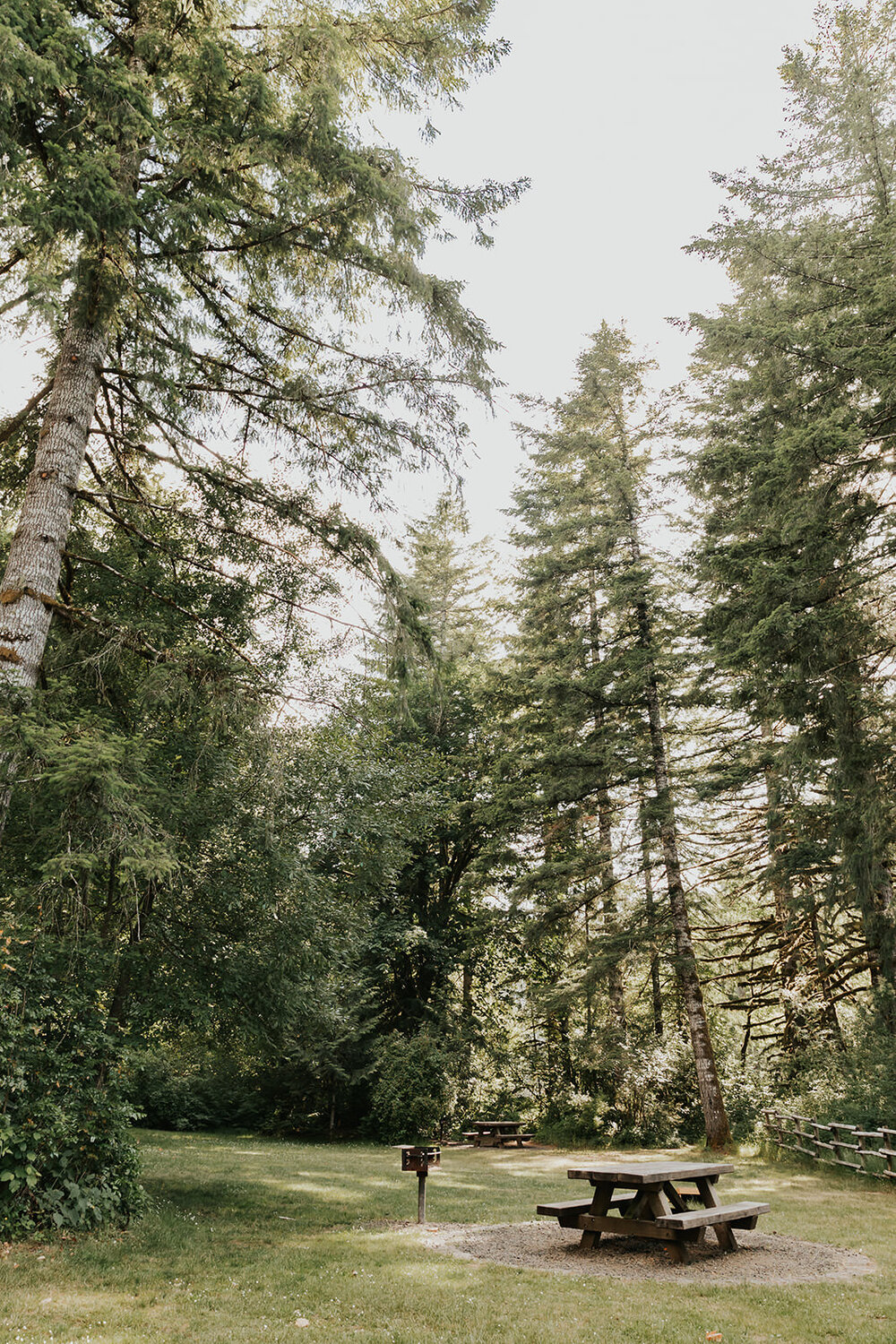

Additional Resources & Links
Trail-Finding Resources:
All Trails – An app that lets you search by difficulty & accessibility.
Accessible Nature – Oregon’s ADA-accessible trails
AbiliTrek – An app that lets you search accessibility reviews for businesses anywhere in the United States
Oregon Spinal Cord Injury Connection – Accessible Trails (in Oregon and parts of Washington)
Nature for All – Info about over 200 braille nature trails and sensory gardens for the visually impaired (and those with other physical disabilities) in the United States and worldwide
Social Media Accounts with Inspiration & Tips:
[…] had zero hiking whatsoever! You can totally find scenic overlooks, easy to reach spots, and even ADA accessible elopement locations all […]
[…] Taking the Watchman Peak trail will lead you to the overlook – where you’ll see an incredible view of Crater Lake below! This trail is 1.7 miles roundtrip, with 400 feet of elevation gain. The lookout at the top is not ADA accessible, but there is a walled overlook that is, which gives you a view of the entire lake! For some more ADA accessible elopement locations in Oregon, check out this guide. […]
[…] The accessibility needs of your guests are another factor when eloping with family – you might need to choose a spot that doesn’t require hiking, or find somewhere that’s more accessible. For our own elopement, it was important that my 87 year old Grandma was able to be present for our day so being considerate of her needs & comfort was a top priority. For some inspiration and guidance, check out these ADA accessible elopement locations in Oregon! […]
[…] You can find also some ADA accessible elopement locations in Oregon in this guide! […]
[…] the Hoh Rainforest Loop. If you want to learn more about how to plan an ADA accessible elopement, check out this guide – it’s about Oregon elopements, but the scenery can be similar to Olympic National […]